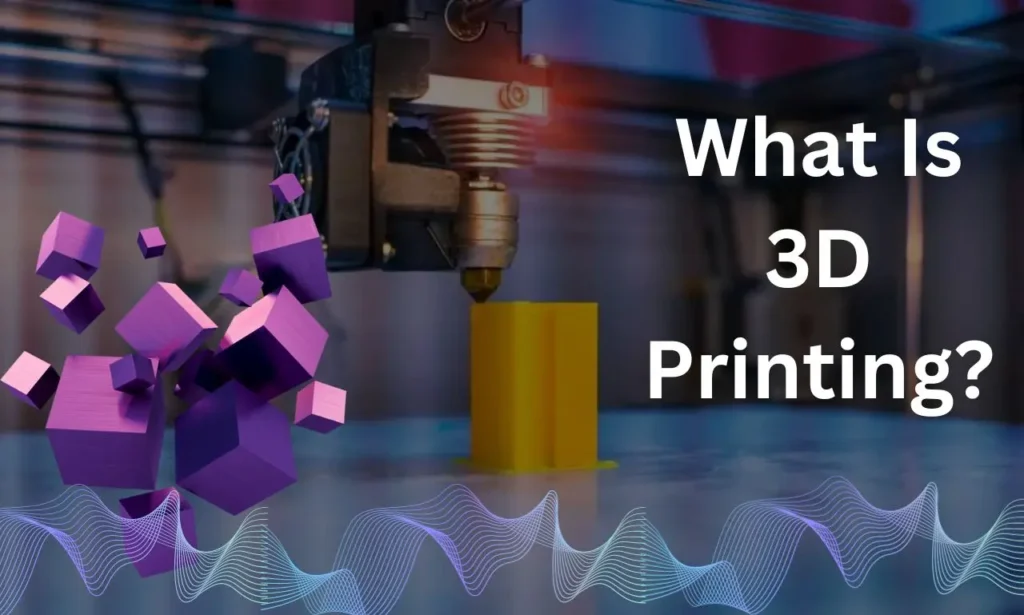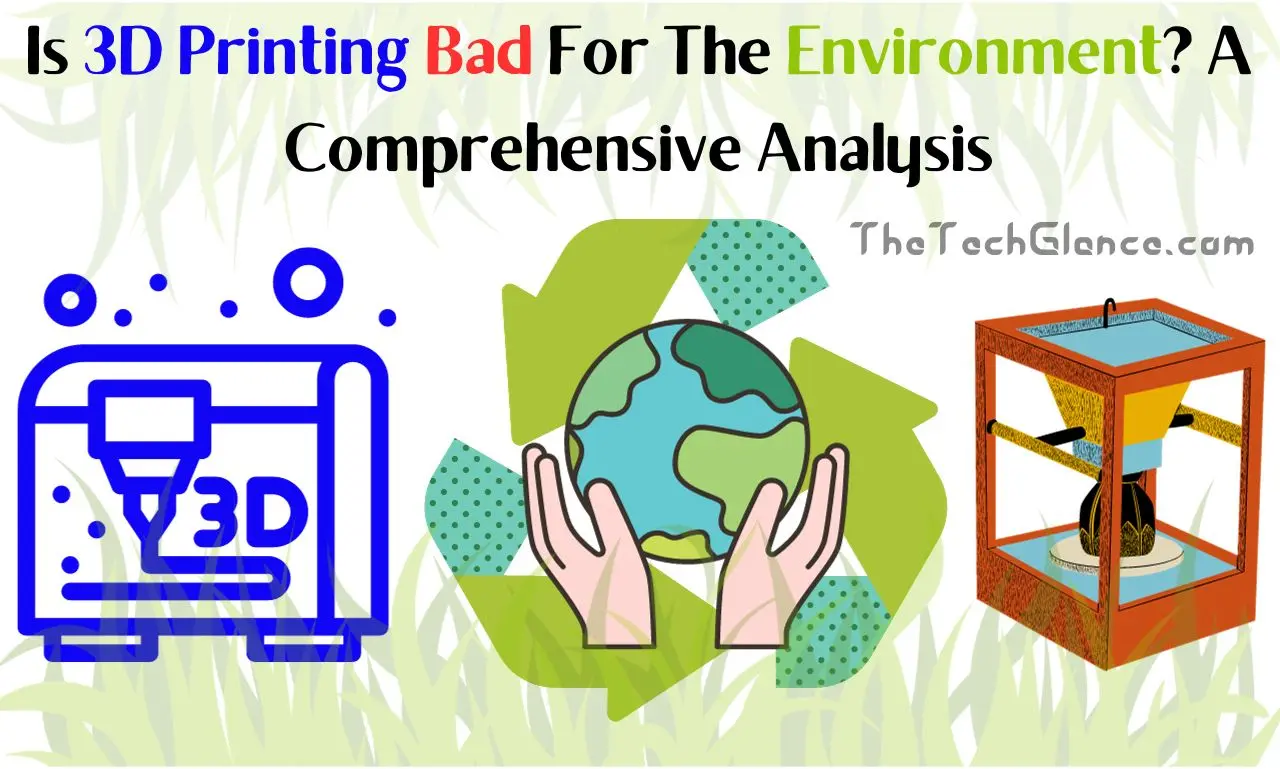3d printing is harmful for the environment because 3d printing takes a lot of electricity to melt the plastic, due to which excessive electricity has to be produced which leads to more carbon emissions. In today’s fast-paced, technology-driven society, 3D printing has the potential to disrupt many different businesses.
From making prototypes to creating one-of-a-kind prosthetics, the applications for 3D printing are vast. Concerns about 3D printing’s potential impact on the natural world serve as a sobering reminder that great power comes with great responsibility. Here, we will delve deep into the topic of 3D printing and analyse its potential environmental friendliness, its impact on the environment, and what can be done to make it more sustainable.
What Is 3D Printing?
First, let’s take a look at what 3D printing entails so we can better understand its environmental impact afterwards. Using a digital model as a guide, additive manufacturing (also known as 3D printing) builds up the product layer by layer. Contrast this with subtractive manufacturing, in which a large chunk of raw material is reduced until a finished product is achieved.

In 3D printing, the intended object is created by fusing or depositing materials such as plastics, metals, or even organic molecules. The capacity of this technology to mass-produce complex components and items swiftly and economically has had an impact on many industries, including aerospace, healthcare, and the fashion industry.
What Are the Negative Effects of 3D Printing?
While 3D printing has many advantages, it is not without its limitations.
- Waste Generation: Large amounts of trash are produced when polymers are used in 3D printing. Imperfect prints, extra support structures, and scraps all add up to a lot of trash.
- Power Use: Large-scale 3D printing initiatives may have a noticeable effect on power consumption. This energy consumption mainly for heating and melting materials causes carbon emissions.
- Toxic Emissions: When heated, some 3D printing plastics emit VOCs, which are known carcinogens. Add to the already hazardous levels of air pollution that these pollutants create.
- Consumption of Resources: To produce the resins and metals used in 3D printing, large amounts of energy and raw materials must be extracted.
Is a 3D Printer Eco-Friendly?
The materials and printing process of a 3D printer determine how eco-friendly it is. Here are a few things to keep in mind.
- Material Selection: You may lessen 3D printing’s ecological footprint by opting for biodegradable and sustainable materials like PLA (polylactic acid) or recycled plastics.
- Energy Efficiency: Reduced power consumption is possible via the use of energy-efficient 3D printers and careful manipulation of print parameters.
- Reduced Waste: Reduce the amount of excess material produced by 3D printing by using waste-reducing design options like hollow structures and appropriate infill patterns.
- Recycling: The recycling features of certain 3D printers make it possible to reuse manufactured items or leftover materials.
- Local Production: In addition to reducing carbon emissions from shipping, local manufacturing is another possible benefit of 3D printing technology.
Does 3D Printing Contribute to Global Warming?
The link between 3D printing and climate change is intricate. Energy consumption in the process results in carbon emissions, which may be reduced by eco-friendly measures. Attend to that:
- Energy Sources: The environmental impact of 3D printing is significantly influenced by the kind of energy utilised in the printing process. To lessen environmental impact, printing presses can be powered by solar or wind energy.
- Localized Production: Long-distance shipping can have a negative impact on the environment, but thanks to 3D printing, production can be brought closer to consumers.
- Optimized Designs: Printing with less material is better for the environment since it requires less energy and resources to produce and transport the raw materials, which is achieved through optimisation of the design.
- Carbon Offset Programs: Businesses and individuals can lessen their impact on the environment by taking part in carbon offset programmes or investing in renewable energy initiatives.
Read More : The Impact Of 5G Technology On Mobile Communication
Is 3D Printing Biodegradable?
Materials for 3D printing range in their degree of biodegradability. 3D printing uses PLA, a biodegradable material that comes from renewable resources, therefore it’s environmentally friendly. However, not every 3D printing material can be biodegraded. Natural decomposition of plastics such as ABS (acrylonitrile butadiene styrene) takes much longer. Therefore, the biodegradability of 3D printed things depends on the materials used to make them.
3D Printing Sustainable Materials
There has been an uptick in research into green 3D printing materials in recent years. Researchers and businesses are exploring several methods to reduce the environmental impact of 3D printing.
- Bioplastics: These plastics are perfect for eco-friendly 3D printing because they are biodegradable and can be created from renewable resources like cornflour or sugarcane.
- Materials Recycled: Reduce your carbon footprint and save money on raw materials by printing with filament made from recycled plastics.
- Wood-Based Filaments: Some 3D printers can use eco-friendlier, biodegradable wood-based filaments instead of the more commonplace polylactic acid (PLA).
- Hemp-Based Filaments: Since hemp is a renewable resource that can be used in 3D printing, filaments made from hemp are becoming more popular.
- Algae-Based Materials: Sustainable 3D printing materials include those derived from algae, which decompose quickly and generate minimal hazardous waste products.
Read More : Is IPhone 15 Pro Better Than Samsung S23 Ultra
Is 3D Printing Expensive?
Many variables affect how much it will cost to print anything in three dimensions::
- Type of Printer: The consumer versions of 3D printers cost a few hundred dollars, while the high-end industrial versions may cost tens of thousands.
- Material Costs: The amount you spend on 3D printing is directly proportional to the quality and variety of the materials you use. The cost of using some specialty filaments might add up quickly.
- Energy Costs: Powering a 3D printer requires money out of pocket, which is reflected in the overall cost of ownership.
- Maintenance: Printers may easily build up a hefty service cost if they aren’t maintained on a regular basis and have worn components replaced.
- Labor Costs: The price of labour is something that has to be considered when using 3D-printed components in finished goods.
However, there are cases when the cost of 3D printing is lower than more conventional manufacturing techniques.
Carbon Footprint of 3D Printing
Assessing the environmental effects of 3D printing is complicated by a wide range of variables.
- Production of Materials: Greenhouse gases are released during the production and distribution of 3D printing materials.
- Generated Garbage: The byproducts of 3D printing, such as discarded support structures and scraps.
- Transportation: Greenhouse gases produced by the shipping of 3D-printed goods to customers.
- End-of-Life: The effects on the environment of 3D-printed items when they are no longer useful and are discarded or recycled.
Individuals and businesses may reduce the negative effects of 3D printing on the environment by implementing sustainable practises including using renewable energy, recycling more, and printing using eco-friendly materials.
Read More : IPhone 14 Pro Max Vs IPhone 15 Pro Max: Which Is Better?
Conclusion
Widespread adoption of customisation and innovation via 3D printing has tremendous promise for many fields. However, there are still problems with the environment. Some unchecked, unsustainable 3D printing practises include the use of non-biodegradable materials and the utilisation of fossil fuels for power.
Keys to making 3D printing more environmentally friendly include responsible material choice, energy efficiency, waste reduction, and sustainable practises. As 3D printing technology improves, there will be more opportunities to minimise its negative impacts and maximise its good consequences.
Using green 3D printing practises and well-informed judgement, we may strike a balance between ingenuity and environmental responsibility. The environmental impact of 3D printing depends on how we decide to implement this game-changing technology.
Hello, my name is Rishabh Kumar and I am the author of TheTechGlance.com. I am fond of writing and I have done engineering from NIT Hamirpur due to which I have good knowledge of technology, AI, Crypto and network.
